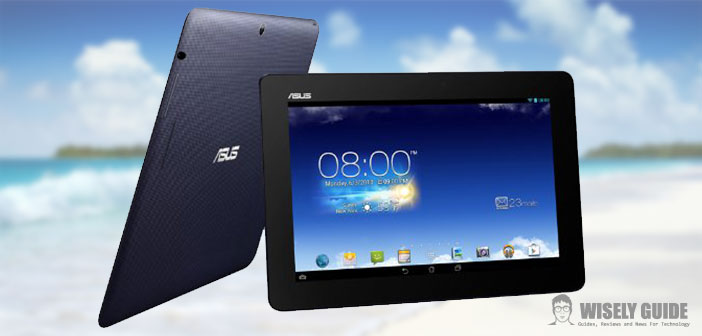For a few weeks, we had a chance to test the Asus MeMo Pad FHD 10, a 10-inch tablet tending to budget, but not with the technical characteristics of little account, which makes her figure, as we shall see, both in terms of design, both in terms of performance. Please note that there are two versions of the tablet, a Wi-Fi only, which is what we have tried, and an LTE. A brief interlude initial concerns the packing, very basic, with tablet, instruction manual, USB cable, micro-USB and power supply.
ASUS MeMo Pad FHD 10 – Design
First appearance of the tablet is that we analyze the design, very clean and elegant, although the materials are not exactly of the highest quality. The rear shell is plastic with holes in it, but nevertheless, it is quite pleasant to the touch, with a touch of elegance given by the silver ASUS logo in relief.
As regards the part of the display remember that being 10 inches, presents the frames quite thick but also in this case not that jeopardize a good use of the tablet, since the same frames allow us to handle with ease the device, without going to occupy the touch. Plus the thickness of the tablet, 9.5 mm, making it fairly easy to handle even with one hand, and not make it feel too much weight, 580 grams.
ASUS MeMo Pad FHD 10 – Display and Hardware
The display, as the name already suggests the tablet, is a Full HD with a resolution of 1,920 × 1,200, and provides performance more than positive. Different is for the brightness, which is not in auto mode adjusts perfectly right, especially if we are in open places, where the reflexes take over making the use of the tablet very difficult. It must be said also that setting the maximum brightness, battery consumption increases a lot, but I would say this is quite normal, with a display of this size and with this resolution.
Moving on to the hardware sector, the benefits provided by the Intel Atom Z2560 1.6GHz are good, and add 2 GB of RAM allow usage sessions also quite intense. The MeMo Pad FHD 10 has exceeded my various tests, including a dozen apps in the background with notifications and active use of games, pretty good. The behavior is still quite fluid and pleasant, and rarely some app has crashed unexpectedly.

ASUS MeMo Pad FHD 10 – Battery

Here is the aspect that perhaps has left me more disappointed, the battery life. Perhaps, it is to say that I was expecting too much, and considering the screen resolution I would not have had to impress, but so it was, and this story. The tablet has never passed a day of use of medium intensity.
And necessary to specify what I mean: out of the house at 9 in the morning and facing a day of lessons, including memos, emails, social and a few games, the ASUS MeMo Pad FHD 10 arrived late in the day (at about 18) a bit try, still with the perhaps 1/5 of the battery. But then again, maybe it is also right that it is, and I was waiting for performance too high.
ASUS MeMo Pad FHD 10 – Camera and Connectivity

The tablet comes with a 1.2 megapixel camera internal and an external 5-megapixel, which in reality, are nothing exceptional. Or rather, what I liked the most is the interior, which has allowed me to better shots than my Kindle Fire HD. The external one cannot boast exceptional shots, and alas, the video shot in 1080p go in spurts.
With regard to connectivity, Asus MeMo Pad FHD 10 is equipped with wireless n class, Miracast technology, Bluetooth 3.0, micro HDMI video output cable is not included. GPS, micro USB output for charging and PC Connection, micro SD slot and, finally, 3.5 jack for headphones.
Review
- Design
- Display and Hardware
- Battery
- Camera and Connectivity

